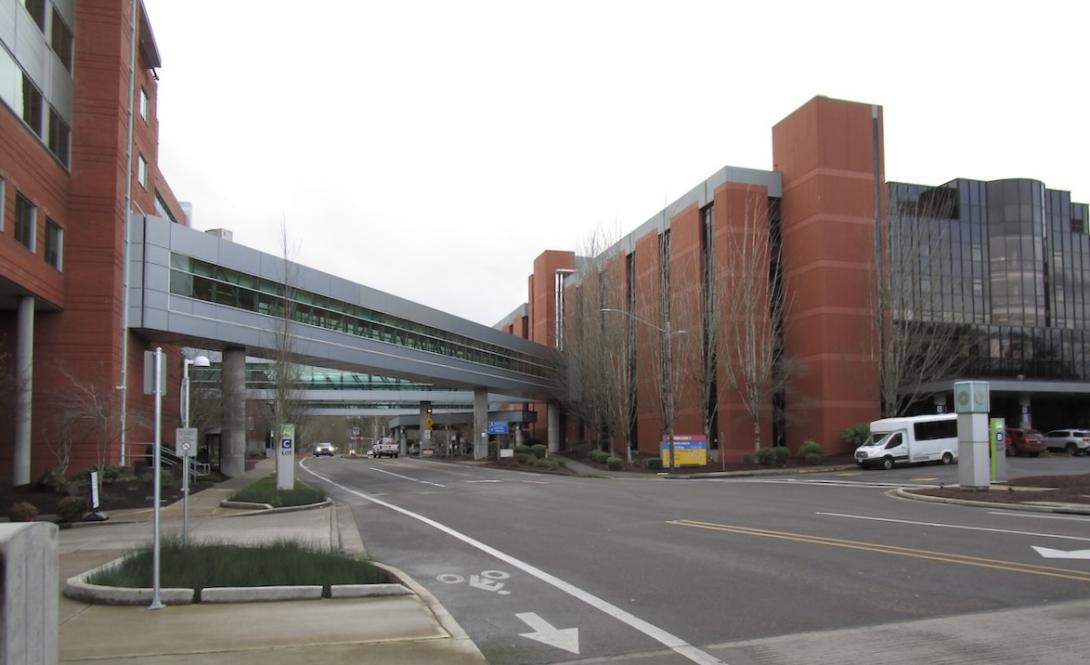
Salem Hospital sent some patients arriving by ambulance to other medical facilities instead on Tuesday.
Lisa Wood, a spokeswoman for Salem Health, said ambulances were diverted for less than four hours on July 26, and only when patients came with conditions that were not life-threatening.
Hospital officials continue to seek alternatives to diverting ambulances to other medical facilities, she said.
Cheryl Wolfe, the president and CEO of Salem Health, planned a press conference on Thursday, July 21, to announce ambulances would be temporarily diverted but canceled the announcement less than an hour before she was scheduled to talk with reporters.
Instead, Salem Health spokeswoman Lisa Wood on July 28 disclosed the four-hour diversion, saying that hospital officials are doing their best avoid sending ambulances elsewhere.
"Salem Health has been working with community partners to fine-tune its divert policy and minimize impact to the community in the event we need to go on divert," Wood said in an email.
She added Salem Hospital has been exceeding its capacity for more than a year.
"There are limits to our capacity, and we are addressing the root causes of high capacity through a number of tools," she said in her statement. "Our goal is to manage capacity for patient and staff safety."
The possibility of diverting ambulances -- at least temporarily -- to other medical facilities remains on the table, Wood said, calling such a measure "a common tool used by hospitals to manage capacity challenges."
It is not particularly common at Salem Hospital. The 454-bed facility has not diverted ambulances in more than a decade. Diversions depend on whether or not the hospital hits a popping point.
"Salem Health is implementing a plan to trigger divert at certain high-volume thresholds," Wood said in her statement. "Periods of divert will be constantly assessed to keep divert time to a minimum."
Wood added she understands diversions are concerning to patients, but emphasized that "no patient, employee or provider harm is acceptable to us."
"To be clear, ambulance diversion means a temporary pause for patients who do not have life-threatening injuries and are arriving via ambulance," she said. "We will continue to have our doors open for patients who arrive via private transportation to seek care and for immediate life-threatening needs.
Multiple factors contribute to strained hospital facilities, not only in Salem but throughout the state.
Patients are often staying in hospitals longer. "The number of COVID-positive patients in our hospital is still averaging 45 to 50 patients each day (today at 48 COVID patients in-house), which equates to nearly two full nursing units," Wood said.
COVID is not the entire reason for longer hospital stays over the past two years. Yet it is a major factor.
"Without the nearly 50 COVID patients alone, it would be much more manageable from a hospital census and cost perspective," Wood said.
"Another part of the equation are barriers to discharge to skilled nursing facilities and long-term care facilities, still ranging from 40 to 80 patients per day who could be discharged from the hospital if these options were open, creating available beds for other patients requiring hospital-level care," she added.
The Oregon Health Authority's website reports 1,361 new COVID cases since Wednesday, July 20 -- including 18 additional deaths. The website reports 400 people were hospitalized during the past week (24 fewer than the previous week.
Tom Henderson can be reached at [email protected]